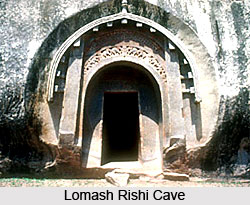 Indian temple architecture can be referred to as a classical form of Indian art and cultural richness, which is entirely reflected in the chiseled wonders of various temples. The architecture found in ancient Indian temples exhibits the country`s old, yet prosperous and splendid culture. These temples, some dating back to more than 1700 years, flaunt meticulous carving and sculptures, bearing testimony of the rare craftsmanship and creativity of the artisans, sculptors and artists of India of the yesteryears. The temple architecture also furnishes ample evidence of the vision of emperors and rulers of bygone periods who have successfully left behind a heritage that modern India is proud to be a part of.
Indian temple architecture can be referred to as a classical form of Indian art and cultural richness, which is entirely reflected in the chiseled wonders of various temples. The architecture found in ancient Indian temples exhibits the country`s old, yet prosperous and splendid culture. These temples, some dating back to more than 1700 years, flaunt meticulous carving and sculptures, bearing testimony of the rare craftsmanship and creativity of the artisans, sculptors and artists of India of the yesteryears. The temple architecture also furnishes ample evidence of the vision of emperors and rulers of bygone periods who have successfully left behind a heritage that modern India is proud to be a part of.
 History of Indian Architecture
History of Indian Architecture
The sthapathis and shilpis developed India`s temple architecture. Hindu temple architecture in ancient India is believed to have germinated for over two thousand years. This architectural execution of the temples came about within the stringent outlines, deduced solely out of religious musings. As a result, the architect was severely instructed to bind his designing and stick to the ancient principle dimensions and frameworks and strict constitutions, which has since continued to stay untouched over the period. Following the set pattern of Indian temple architecture, architectural elements and ornamental particulars in a Hindu temple commenced its prolonged journey in the earlywood, timber and thatched constructions. This pattern was then to persist for centuries in one form or another in the stone structures, despite the original purpose and perspective being lost forever. And this once-more fresh pattern can be examined from the horseshoe-shaped window. The source of this kind of window can be retraced from the chaitya arch doorway, first at the Lomash Rishi cave in the Barabar Hills employed in the 3rd century B.C. It was then metamorphosed later into a dormer window, renamed a gavaksha. In due course, the gavaksha was used exactingly as the decorative design of lattice-like forms, witnessed on the towers of medieval Hindu temples.
Illustrations of Indian Architecture
Throughout the greater part of India, the sanctuary as a whole is known as the Vimana is a common structure in major temples of North India which were built during the Rajput period. The most complete illustrations of the fully formed temple structure are the 10th century examples at Khajuraho, Central India. In the temple architecture, the religious motive was predominant. Temple construction followed certain standards as far as its structure and making procedure is concerned. The masons showed judicious observance of the laws of gravity, an appreciation of the grandeur of mass and the rich value of shadows. Elegant proportions, graceful contours, and rich surface treatment are features of the North Indian temples especially. The halls are richly decorated with sculptures that are dedicated to Mahadeva, Lord Vishnu and Jagdamba and the Jain deities. Many Jain temples were also built during this period. Mount Abu has many Jain temples.
Royalty of the Indian architecture
 Royal patronage was another exceedingly pregnant factor on the aesthetic evolvement of Indian temple architecture and, regional styles are often distinguished by the dynasty that gave rise to them. The Pallavas, Cholas, Hoysalas, Guptas, Chalukyas and Chandelas were such royal clients who had contributed to making ancient Indian architecture proud to this date.
During the rule of Chalukyas of Badami, Indian architecture witnessed a glorious era. Badami Chalukyas established the foundations of cave-temple architecture, on the banks of the Malaprabha River. The styles include Aihole, Pattadakal, and Badami. The sites were built out of sandstone which is cut into enormous blocks.
Royal patronage was another exceedingly pregnant factor on the aesthetic evolvement of Indian temple architecture and, regional styles are often distinguished by the dynasty that gave rise to them. The Pallavas, Cholas, Hoysalas, Guptas, Chalukyas and Chandelas were such royal clients who had contributed to making ancient Indian architecture proud to this date.
During the rule of Chalukyas of Badami, Indian architecture witnessed a glorious era. Badami Chalukyas established the foundations of cave-temple architecture, on the banks of the Malaprabha River. The styles include Aihole, Pattadakal, and Badami. The sites were built out of sandstone which is cut into enormous blocks.











